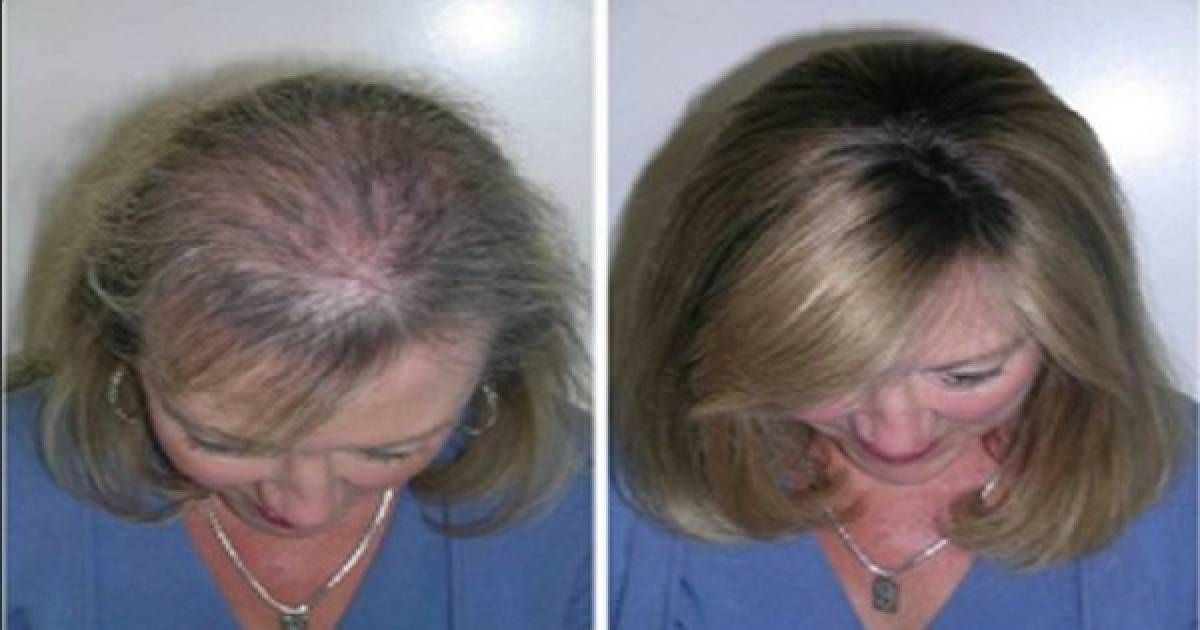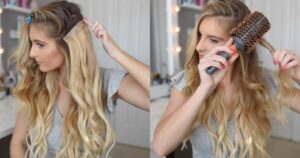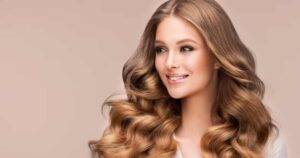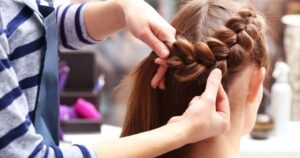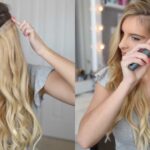High lift color, while effective in lightening hair, can potentially cause damage. The high levels of peroxide in these products can weaken the hair’s structure, making it more prone to breakage and dryness. To minimize damage, it’s essential to use high-lift colors sparingly and follow up with proper hair care, like deep conditioning and avoiding excessive heat styling.
To keep your hair healthy, always consult with a professional colorist who can assess your hair’s condition and recommend the best approach to achieve your desired color while minimizing damage.
High Lift Color
High lift color is a hair dyeing technique designed to lighten natural hair color by several shades. It is especially popular among those who want to achieve blonde or lighter shades without using bleach. This technique is typically used on individuals with natural hair shades ranging from dark brown to medium brown. High-lift color, also known as “high-lift dye,” is a gentler alternative to traditional bleach-based hair lightening methods.
How Does High-Lift Color Work?
High lift color relies on a combination of ammonia and a developer to penetrate the hair shaft and lighten the existing pigments. It contains a higher concentration of ammonia compared to regular hair dyes, which helps in lifting the natural color of your hair. Additionally, it utilizes a stronger developer (usually 30 or 40 volumes) to open the hair cuticle and allow the color to penetrate deeper, resulting in a significant color change.
Ideal Candidates for High Lift Color
High lift color works best for individuals with dark brown to medium brown hair. It can help achieve shades of blonde, light brown, and red without the need for pre-bleaching. It’s not recommended for people with already light hair colors or for those with a significant amount of gray hair.
Does High Lift Color Damage Hair?
There’s a common misconception that high-lift color is more damaging to hair than other coloring methods. Let’s break down this myth and explore the actual impact of high-lift color on your locks.
High Lift Color Always Damages Hair
High lift color, when used correctly and by a professional stylist, doesn’t inherently damage hair. It is crucial to follow the instructions and recommended procedures to minimize potential damage. When applied improperly or too frequently, any hair coloring process, including high lift color, can lead to damage.
Factors that Influence Hair Damage
The degree of hair damage from high-lift color depends on several factors:
Hair Health:
The current health of your hair plays a significant role. If your hair is already damaged or weak, any coloring process can exacerbate the issue.
Professional vs. DIY:
The skill and experience of the person applying the high lift color are essential. Professional stylists are trained to minimize damage and choose the right products for your hair type.
Product Quality:
The quality of the high-lift color product and developer matters. Using reputable and high-quality products can reduce the risk of damage.
Maintenance:
Proper post-coloring care and maintenance can also influence how your hair fares after high lift color application
Steps to Minimize Hair Damage
If you’re considering high lift color, here are some steps to minimize the potential for damage:
Consult with a Professional
Always consult with a professional hair colorist who can assess your hair and recommend the best approach for your desired color. They can ensure that the application is done correctly, reducing the risk of damage.
Strengthen Your Hair
Prior to applying high lift color, it’s a good idea to strengthen your hair with deep conditioning treatments and hair masks. This can help prepare your hair for the coloring process.
Choose Quality Products
Select high-quality high lift-color products and developers to ensure a better outcome. Consult with your stylist to determine the best options for your hair type.
Post-Color Care
After the coloring process, it’s essential to follow a proper hair care routine. Use sulfate-free shampoos, conditioners, and hair masks designed for color-treated hair to maintain the color and minimize damage.
Avoid Frequent Coloring
High lift color should not be used too frequently. Give your hair time to recover between coloring sessions to prevent over-processing.
The Potential for Damage
| Type of Damage | Description |
| Chemical Damage | Resulting from the use of harsh chemicals in hair treatments, such as bleaching or over-processing. |
| Heat Damage | Occurs when excessive heat styling tools like straighteners and curling irons are used without proper protection. |
| Physical Damage | Damage from physical factors, such as excessive brushing, tight hairstyles, or hair accessories that pull on the hair. |
| Environmental Damage | Exposure to environmental factors like UV rays, pollution, and harsh weather conditions can damage hair. |
| Color Damage | Frequently changing hair color can weaken the hair structure and lead to damage and breakage. |
| Overwashing Damage | Washing hair too frequently can strip it of natural oils, causing dryness and damage. |
| Improper Care Damage | Using the wrong hair care products or not following a suitable hair care routine can lead to damage. |
| Lack of Moisture Damage | Insufficient hydration can result in dry, brittle, and easily damaged hair. |
| Nutritional Damage | A poor diet lacking essential nutrients can affect the overall health and strength of hair. |
| Hormonal Damage | Hormonal imbalances can impact hair health and lead to thinning or loss. |
| Stress-Related Damage | High-stress levels can trigger hair problems like excessive shedding and breakage. |
| Aging-Related Damage | As people age, their hair may naturally become thinner and more prone to damage. |
Understanding the potential sources of damage can help individuals take preventative measures to maintain healthy and beautiful hair.
Alternatives to High Lift Color
If you are concerned about potential damage from high lift color, consider alternative methods to achieve your desired hair color:
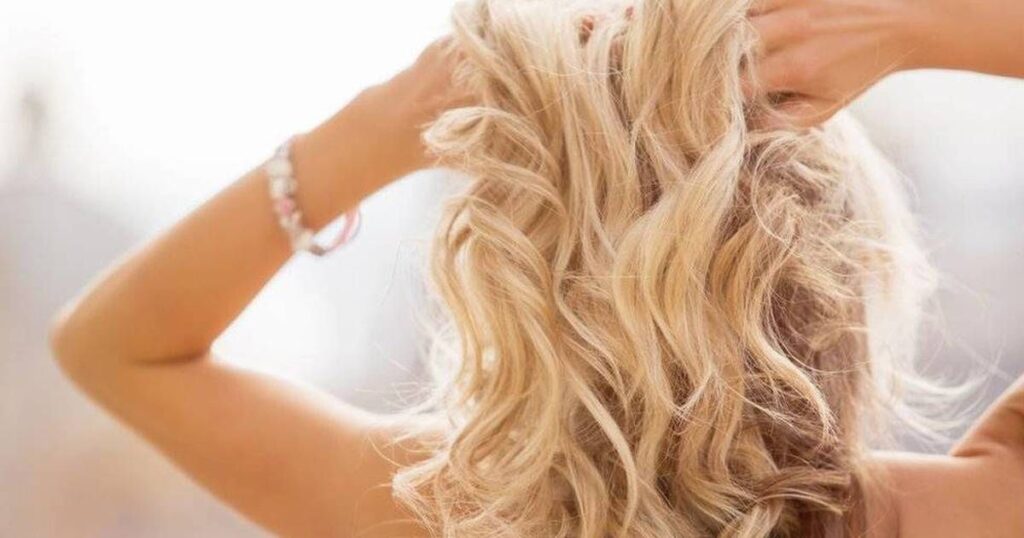
Highlights and Lowlights
Rather than coloring your entire head, opt for highlights or lowlights. These techniques can create dimension and add depth to your hair without the need for full-color changes.
Balayage
Balayage is a trendy hair coloring technique that involves hand-painting highlights onto your hair. It provides a natural and low-maintenance look.
Semi-Permanent Color
Semi-permanent hair color is less damaging than permanent options. Semi-permanent hair color gradually fades over time, allowing for a lower level of commitment to a specific shade.
Henna and Natural Dyes
For those looking for a more natural approach, henna and other plant-based dyes can be used to achieve various shades without the chemicals present in traditional hair dyes.
Frequently Asked Question
Does high lift color damage hair more than regular hair dye?
High lift color has a stronger lightening effect, which can potentially lead to more damage than regular hair dye. However, the extent of damage depends on factors such as the condition of your hair, the quality of the products used, and proper application.
Can high lift color be less damaging with proper care?
Yes, you can minimize damage by taking good care of your hair. Use high-quality hair products, avoid excessive heat styling, and follow a hair care routine that includes deep conditioning treatments.
Who should consider using high-lift colors?
High lift color is suitable for those who want to achieve a significantly lighter hair color, especially when dealing with dark or natural hair. It’s a popular choice for people looking to go blonde or achieve a dramatic color change.
Are there alternatives to high lift color for less damage?
Yes, there are alternatives like balayage, highlights, or low-ammonia hair dyes that can provide a lighter hair color with less potential for damage. Consult with a professional colorist to find the best option for your hair.
What precautions should I take if I want to use high lift color?
If you’re considering high-lift color, consult a professional colorist who can assess your hair’s condition and recommend the best approach. Additionally, ensure you follow the provided instructions, use protective treatments, and avoid over-processing to minimize damage.
Conclusion
A high-lift color is a viable option for those looking to lighten their hair, but its impact on your hair largely depends on how it is applied and maintained. It is not inherently damaging when used correctly and with proper care.
To achieve the best results while preserving the health of your hair, consult with a professional stylist, use high-quality products, and follow a post-coloring care routine. If you’re still concerned about potential damage, consider alternative coloring methods that may be gentler on your locks. Ultimately, the key to beautiful, healthy hair is understanding the process and making informed choices.
